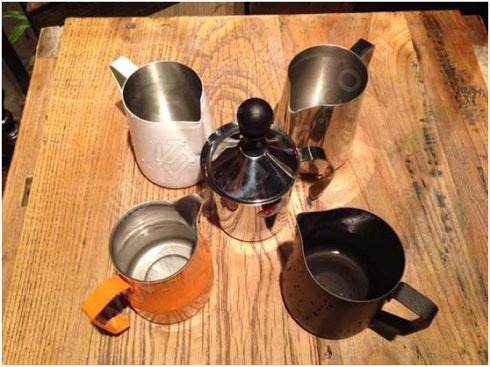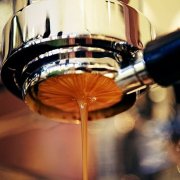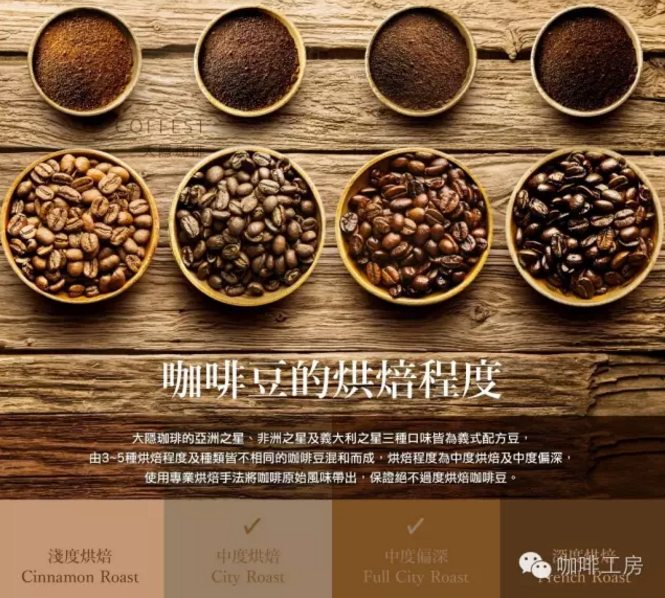Hand washing course: Kalita Wave coffee filter cup hand washing guide

For professional baristas, please follow the coffee workshop (Wechat official account cafe_style)
[guide] Today, I would like to introduce a very excellent equipment-Kalita Wave Dripper hand coffee filter cup.
[Kalita Wave]
KalitaWaveDripper is a flat-bottomed hand filter cup from Japan. The flat-bottomed design can make the extraction more sufficient. The difference between KalitaWave and the familiar HarioV60 is that the bottom is flat. Although the flavor change in the cake cup hand is not as strong as that in the cone filter cup, the overall flavor, solid taste and sweetness of the beans always perform very well.
[equipment introduction]
The Kalitta Wave coffee filter cup is available in two sizes: # 155 and # 185. The size of # 155 is smaller for a cup of coffee and # 185 is larger for 2-4 people. The KalittaWave coffee filter cup is available in both glass and stainless steel, and there is also a ceramic one for # 185.
If you take a closer look at the Kalita stainless steel filter cup, you will see that there are three small holes at the flat bottom for coffee liquid to flow out. You need to buy special filter paper for cake cup and Kalita filter paper. Our shop prefers to use Bonavita cake cup filter paper. The thicker version is thicker than Kalita, specially deepens the design of side guide slot, and provides hand-punching experience.
The next pot, there is a matching Kalita glass pot, if not, it is necessary to buy Kalita glass pot, other brands can also.
Hand flushing pot, it is recommended to use the goose neck outlet kettle, that is, the small mouth kettle (inner diameter 6mm above), easy to control the water flow, Kalita has their model, but I like to use the Bonavita hand flushing pot, it is better to control the flow.
[bean parameters] Rose Summer of Panamanian Jade Manor
Country: Panama
Treatment: washing
Variety: rose summer (basket mark)
Baking degree: light baking
Let's start making coffee. ]
Step 1: load the filter paper-the cake cup filter paper is placed in the filter cup and put the filter cup on top of the container of your choice.
Step 2: wet the filter paper with hot water, inject hot water into the center of the hand punch pot, and then cast the filter paper in a clockwise circle to keep the edge of the filter paper in its original shape.
There are three objectives:
A. let the filter paper and the filter cup stick more closely and stick together to prevent the channel effect.
B, remove the smell of filter paper.
C, hot water will flow into the next pot, playing the role of warm pot, making the coffee more delicious.
Note: for Kalita, hot water should be injected directly and quickly into the center. Do not inject water along the edge, so there is a risk of distortion of the filter paper, remember to pour out the waste water.
Then again, you don't have to pre-wet the filter paper in exchange for a good cup of coffee. ErinMcCarthy used Kalita Wave when he won the 2013WorldBrewersCup, and he didn't pre-wet the filter paper. "Don't wet the filter paper, because the Wave filter paper is very thin, and it won't affect the correct taste of the coffee if you omit this step," KirstenStamn said in an interview with him. ]
Step 3, add coffee powder, weigh 15g coffee powder, pour into the grinder to grind moderately, the finished particles are slightly thicker than salt, we use small Fuji ghost teeth, scale 4
There are many ways to make coffee by hand, but I like to start at 1:15, which means using 1 serving of coffee with 15 servings of water. According to the size of the filter cup, the following two ratios are listed for everyone to choose from:
● model # 155g-20g coffee powder corresponds to 230g water-300g water
● model # 185: 20g-30g coffee powder corresponds to 300g-450g water
The fourth step: inject hot water (with pause or continuous injection) 15g powder, 90 degrees water temperature, gouache 1:15, injection about 225g water, the actual extraction liquid is about 220g.
[one is slow and stable continuous water injection]: thin water flows around in a long circle and gently injects water to let it be extracted evenly, very slowly, and the filtration of Kalita is slower than that of kono cone cup and V60 cup.
[the other is water injection with stew]: the hot water in the hand flushing pot draws a circle clockwise with the center of the filter cup in the middle of the filter cup, starts the time when brewing, brews the coffee to 30g in 15 seconds, and then stops the water injection, when the time reaches 1 minute, the second water injection. The second time of water injection is the same as before, draw a circle clockwise with the center of the filter cup, the water flow should not rush to the place where the coffee powder is connected with the filter paper, so as to avoid the channel effect, the coffee powder can be washed to the outermost circle and leave a circle to brew in the middle. Within 2 minutes to 2 minutes and 20 seconds, the coffee should be washed to 230g, and the coffee should be brewed manually.
Both methods are good. I prefer step-by-step injection with stew. Although a longer steaming time may give a thicker taste, it is also easy to affect the cooking results because of the larger surface area in contact with the air and the rapid decrease of the water temperature.
[results]
Two drinks, the first one tastes smoothly, a touch of vanilla, but Geisha should have almost no fruit acid, did not rush out. The second kind of sunberry is much more fruity, more similar to the V60, body is thicker, the latter has a touch of red wine, and the taste is good, with a solid taste and sweetness.
[main points]
When steaming, the force of water injection is not too strong, gently, do not touch the edge of the filter paper.
The amount of water used in steaming should be about 10% of the total water. In the case of 300ml coffee, the amount of water needed for steaming is about 30ml; or according to the amount of powder, if 15 grams of powder, the steaming ratio is 1:2, 30 grams of water can be injected, and if 20 grams of powder is steamed at 1:2, 40 grams of water can be injected.
In the process of steaming, there is as little extract as possible; when there is too much extract in the kettle, the amount of water injected should be reduced, or attention should be paid to the degree of grinding.
This is the sharing of our experience.
For reference only
Important Notice :
前街咖啡 FrontStreet Coffee has moved to new addredd:
FrontStreet Coffee Address: 315,Donghua East Road,GuangZhou
Tel:020 38364473
- Prev

Vinegar for coffee? Have you tried the novel cuisine of coffee beans?
Coffee workshop (Wechat official account cafe_style) Coffee is one of the most popular crops in the world. Many people must have a cup of coffee every day. If you also like coffee, try vinegar made from coffee beans. Author = Kim Huan Yang (Korean fermentation researcher, now the representative of fermentation KOREA Company, serving as fermentation science
- Next

Practical information | are you still obsessed with the grindness of all kinds of coffee? Don't you look!
Making good coffee is much easier than baking good beans, because the variables of making coffee are relatively simple and easy to grasp, unlike baking, which often receives about water content, hardness, climate, firepower, exhaust valve and exhaust pipe patency. You only need to remember the simplest point: the finer the grinding, the shorter the cooking time; the rougher the grinding, the longer the cooking time. Esoteric
Related
- Beginners will see the "Coffee pull flower" guide!
- What is the difference between ice blog purified milk and ordinary milk coffee?
- Why is the Philippines the largest producer of crops in Liberia?
- For coffee extraction, should the fine powder be retained?
- How does extracted espresso fill pressed powder? How much strength does it take to press the powder?
- How to make jasmine cold extract coffee? Is the jasmine + latte good?
- Will this little toy really make the coffee taste better? How does Lily Drip affect coffee extraction?
- Will the action of slapping the filter cup also affect coffee extraction?
- What's the difference between powder-to-water ratio and powder-to-liquid ratio?
- What is the Ethiopian local species? What does it have to do with Heirloom native species?

